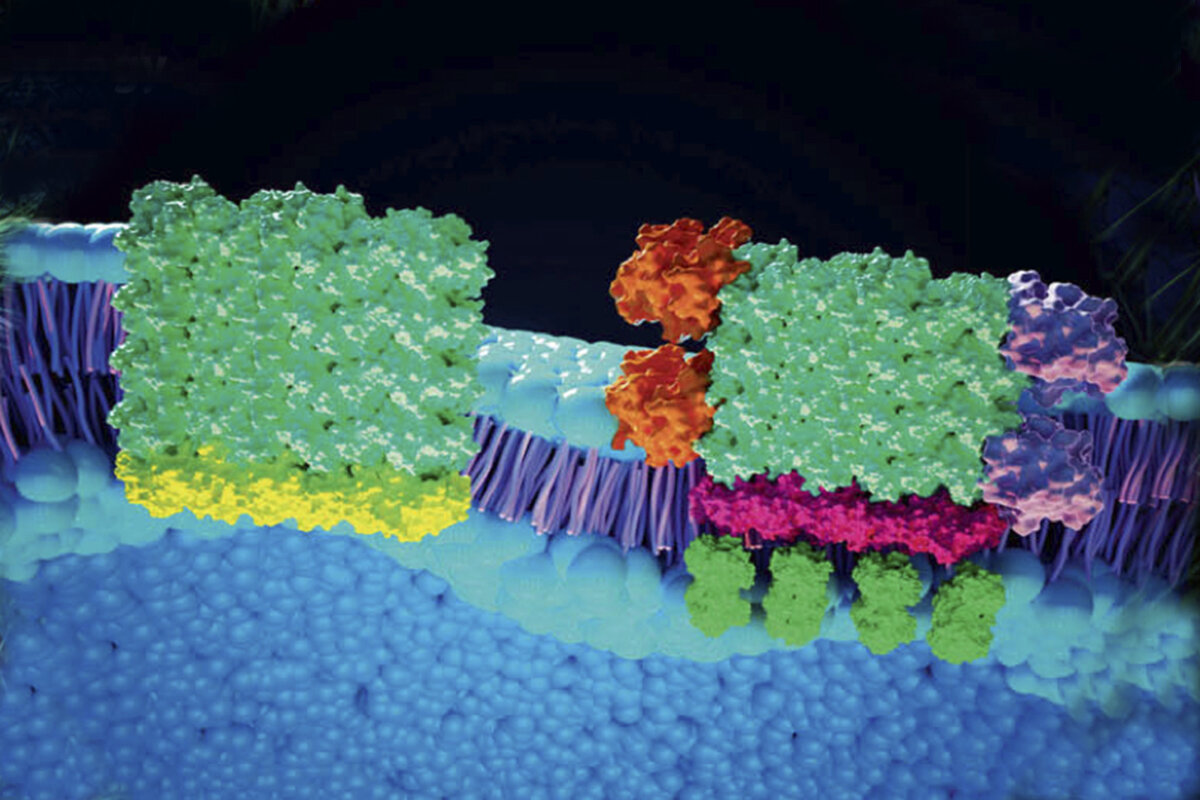
[ad_1]

Researchers in Illinois have developed a method that makes membrane-bound receptors reactive to light, triggering the Wnt pathway, important in embryonic development and cancer. Credit: Kai Zhang
Blue light sheds light on a new understanding of a key signaling pathway in embryo development, tissue maintenance and cancer genesis.
Researchers at the University of Illinois at Urbana-Champaign have developed an approach that uses blue light to activate the Wnt (pronounced “wint”) signaling pathway in frog embryos. The pathway plays a wide variety of roles in animal and human development, and the ability to regulate it with light will allow researchers to better study its various functions, the team said.
Led by Kai Zhang, professor of biochemistry, and Jing Yang, professor of comparative biosciences, the research team published their work in the Journal of Molecular Biology, where it was chosen as the featured communication, representing the top 1% of articles.
The Wnt pathway is activated by a receptor on the cell surface that triggers a cascading response within the cell. Too much or too little signal can be disastrous, Zhang said, making it very difficult to study the pathway using standard techniques to stimulate cell surface receptors.
“During embryonic development, Wnt regulates the development of many organs such as the head, spinal cord and eyes. It also maintains stem cells in many tissues in adults: while insufficient Wnt signaling leads to failure of tissue repair, high Wnt signaling can result. in cancer, ”Yang said.
It is very difficult to achieve the necessary balance with standard approaches to regulate such pathways, such as chemical stimulation, Zhang said. To solve this problem, the researchers designed the receptor protein to respond to blue light. With this approach, they can fine-tune the Wnt level by modulating the intensity and duration of the light.
“Light as a treatment strategy has been used in photodynamic therapy, with the advantages of biocompatibility and no residual effects in the exposed area. However, most photodynamic therapies generally use light to generate high energy chemicals, for example reactive oxygen species, without differentiating between normal and diseased tissue, making it impossible to target treatment ” Zhang said. “In our work, we have demonstrated that blue light can activate a signaling pathway in different body compartments of frog embryos. We envision that spatially defined stimulation of cellular functions could mitigate the challenges of off-target toxicity.”
The researchers demonstrated their technique and verified its tunability and sensitivity by inducing spinal cord and head development in frog embryos. They hypothesize that their technique could also be applied to other membrane-bound receptors that have proven difficult to target, as well as other animals that share the Wnt pathway, allowing for a better understanding of how which these pathways regulate development and what happens when they are terminated. – or under-stimulated.
“As we continue to expand our photosensitive systems to cover other essential signaling pathways underlying embryonic development, we will provide the developmental biology community with a valuable set of tools that can help them determine outcomes. signaling underlying many developmental processes, ”Yang said.
The researchers also hope their light-based technique to study Wnt can inform tissue repair and cancer research in human tissue.
“Because cancers often involve overactivated signaling, we envision that a light-sensitive Wnt activator could be used to study cancer progression in living cells,” Zhang said. “In combination with live cell imaging, we would be able to quantitatively determine the signaling threshold that could transform a normal cell into a cancer cell, thus providing primary data for target-specific therapeutic development in future medicine. precision. ”
Targeted elimination of leukemic stem cells
Vishnu V. Krishnamurthy et al, Optogenetic control of the canonical Wnt signaling pathway during embryonic development of Xenopus laevis, Journal of Molecular Biology (2021). DOI: 10.1016 / j.jmb.2021.167050
Provided by the University of Illinois at Urbana-Champaign
Quote: Light May Trigger Key Signaling Pathway for Embryonic Development as well as Cancer (2021, Aug 17) Retrieved Aug 18, 2021 from https://phys.org/news/2021-08-trigger-key- pathway-embryonic-cancer.html
This document is subject to copyright. Other than fair use for private study or research purposes, no part may be reproduced without written permission. The content is provided for information only.
[ad_2]
Source link